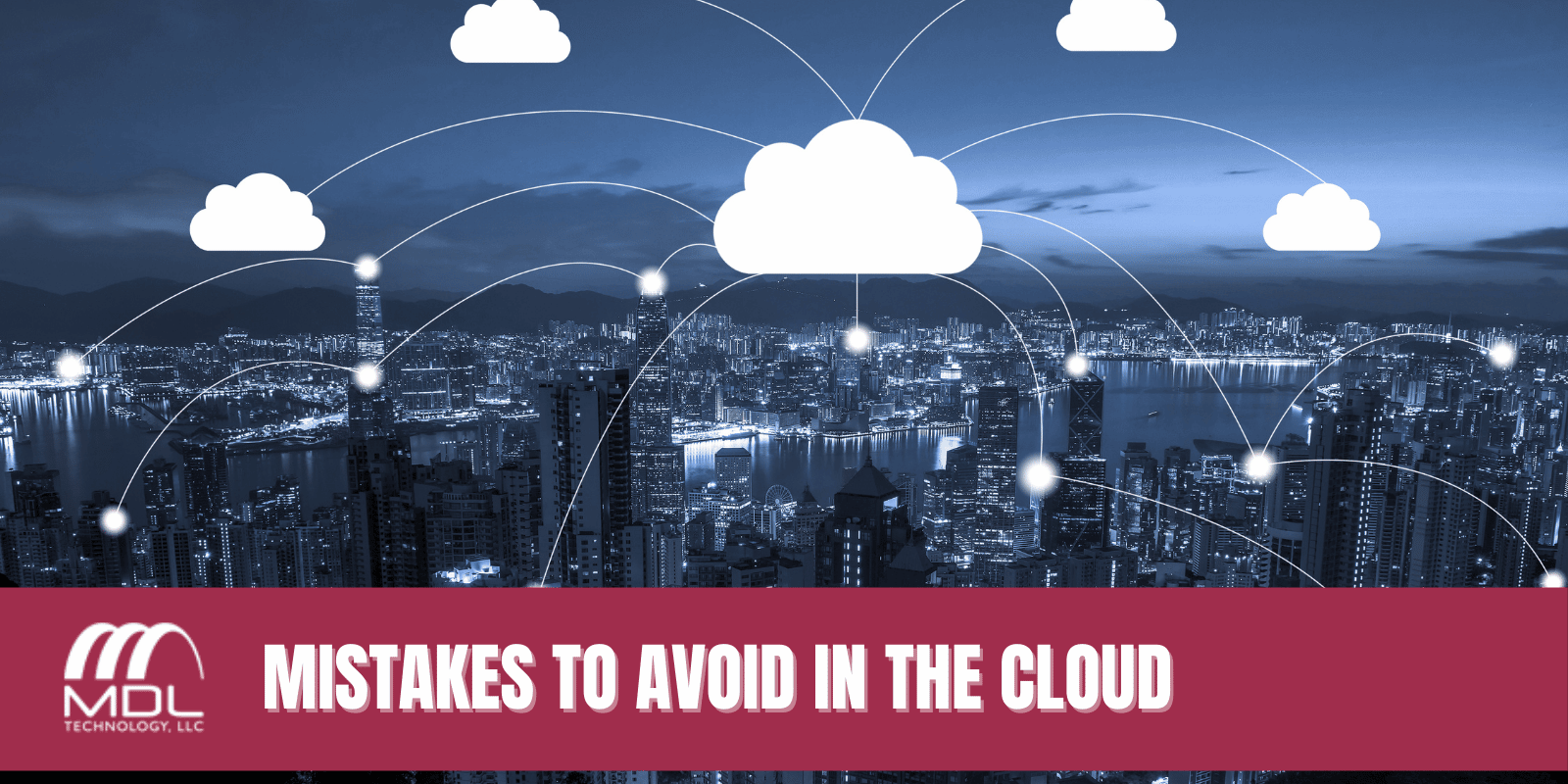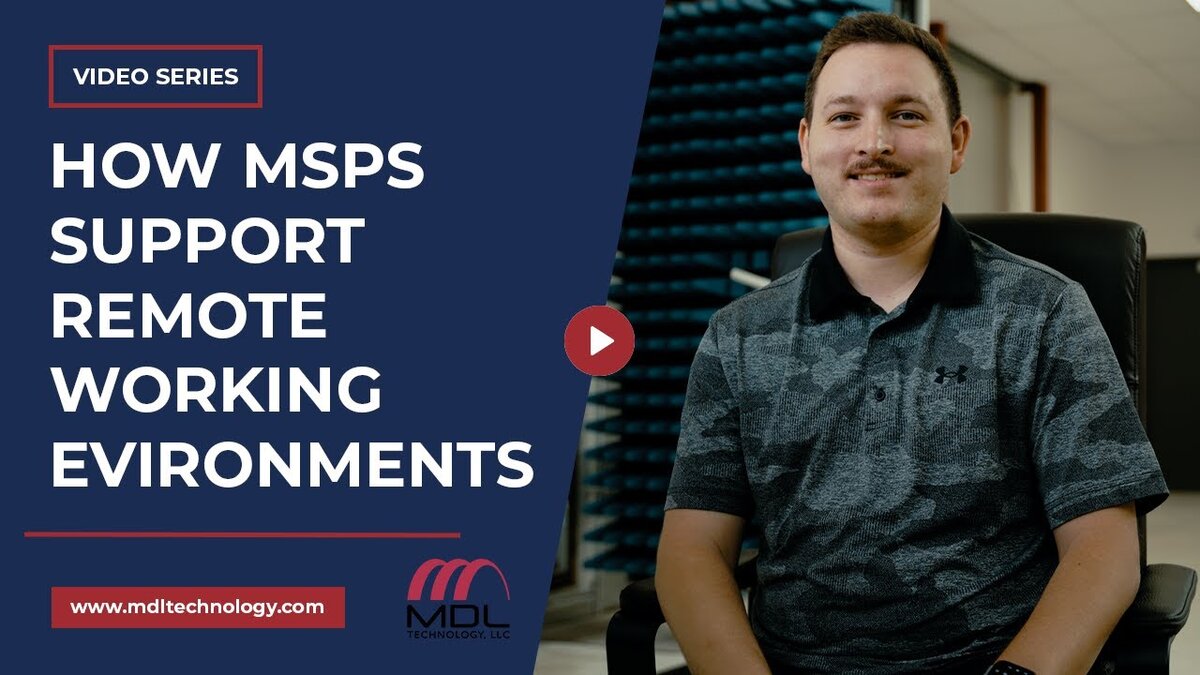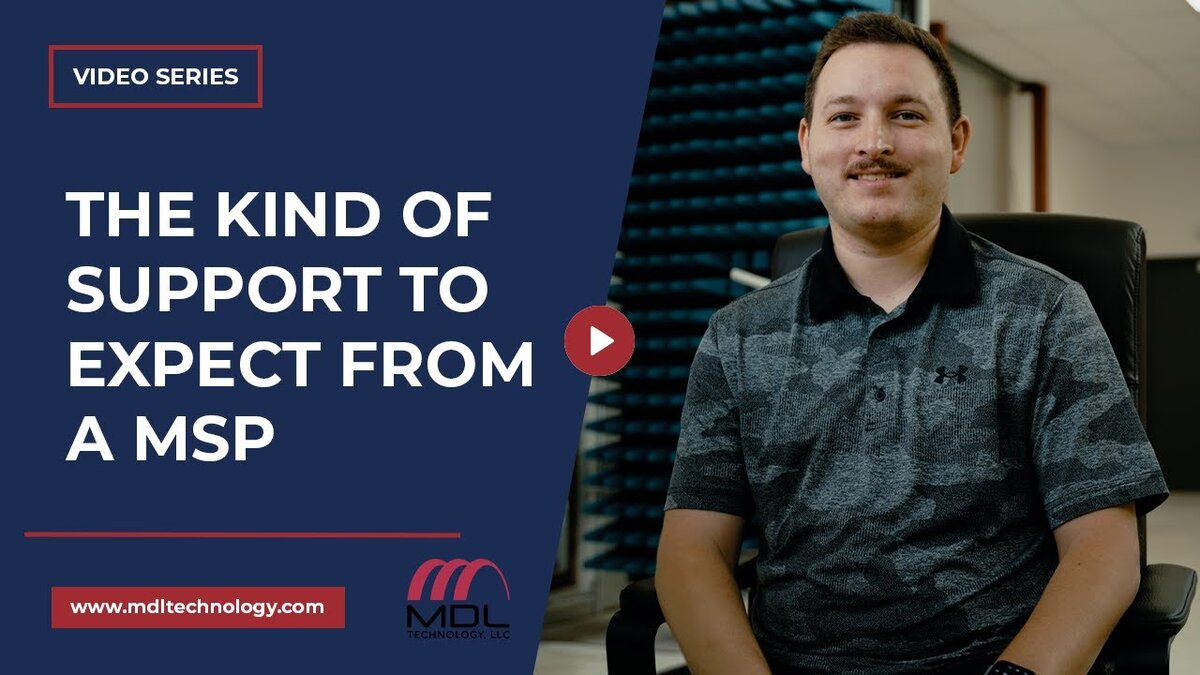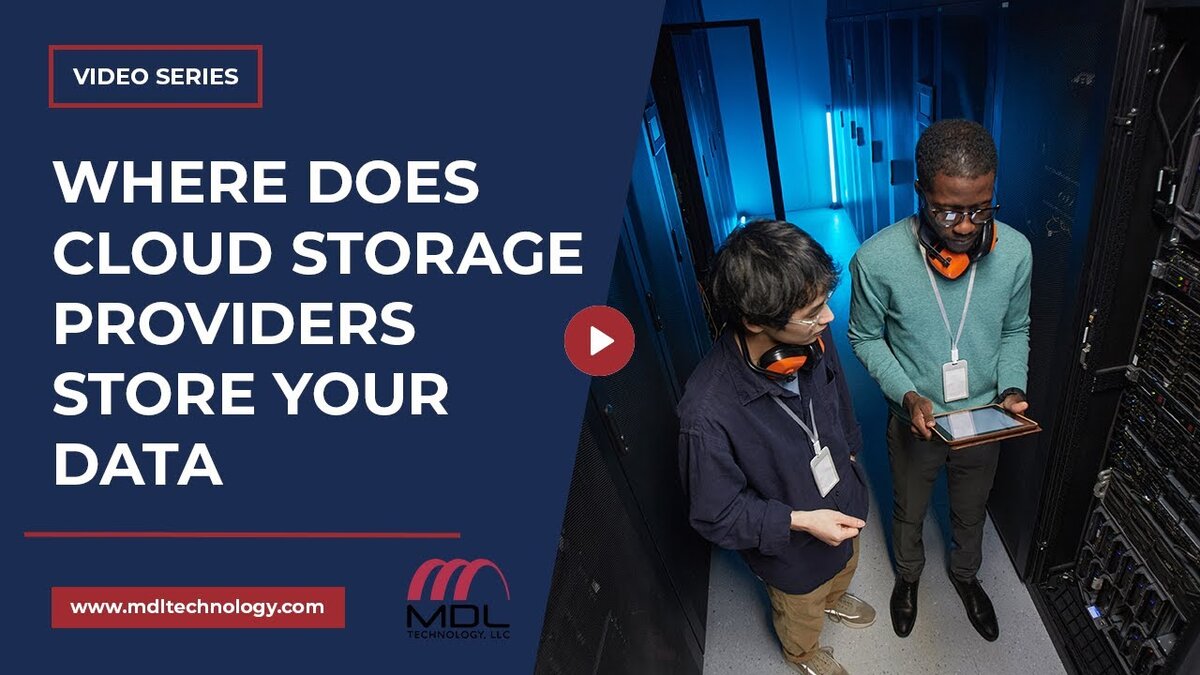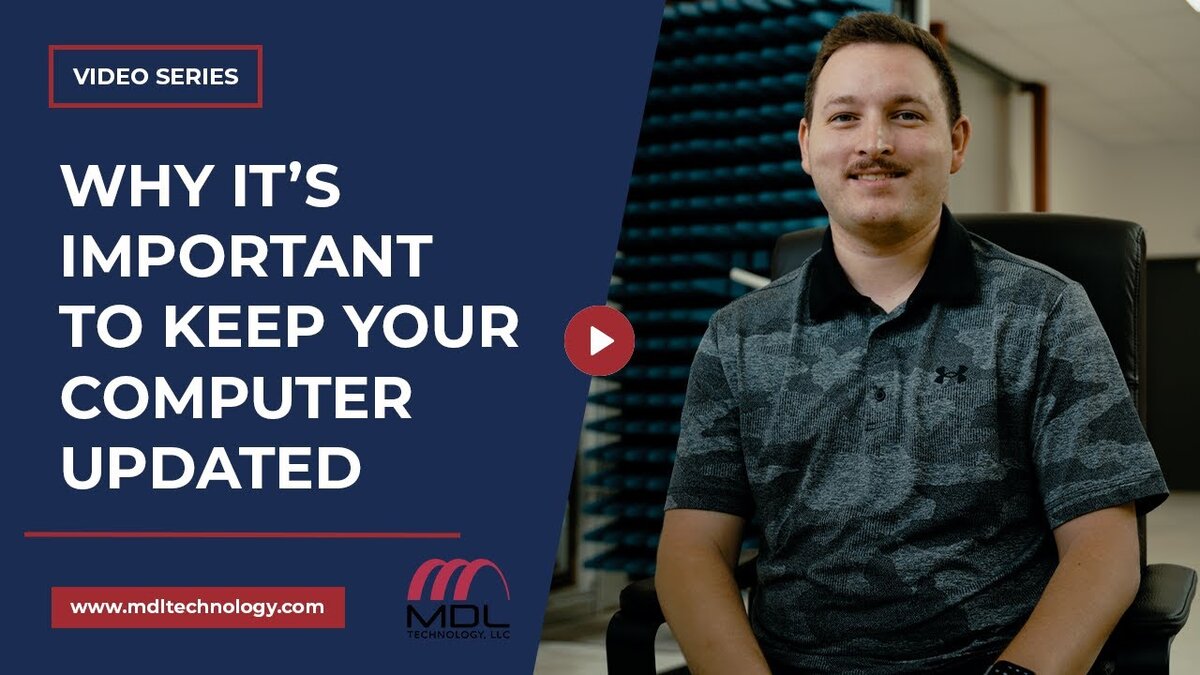Did you know that 94% of companies are leveraging the many benefits of cloud computing? That means that 94% of businesses can benefit from avoiding common cloud computing mistakes.
Over the years, cloud computing has revolutionized how companies organize, store and access their data. As a result, cloud computing systems have become a cornerstone tool for businesses of all sizes and industries, from creating new possibilities for seamless remote work to offering secure storage for your most sensitive data.
Whether you’re considering a transition to a new cloud computing system or want to check your habits with a current system, here are some common mistakes you can make in your cloud computing system.
1. Assuming all clouds are the same
Ready to transition to the cloud? Don’t assume the first option you find or the cheapest option you see will be your business’s best course of action. There are multiple types of cloud computing tools to consider, primarily if you work with sensitive clients, patients or company data.
The three main types of cloud computing to consider are Public, Private and Hybrid systems. Each one has specific pros and cons — it’s up to you and your IT team to decide which one is best for your company.
If you need help deciding on a cloud computing system ideal for your company, reach out to the MDL team! We will help you select and license a solution appropriate to your needs and work with you to ensure you get the best out of the licenses you pay for.
Public Cloud
A public cloud system is the most common and usually the most affordable of the three cloud types. Ninety-one percent of businesses leverage the benefits of a public cloud, with many using this option in tandem with a private system. Network information is hosted on an external server, and resources are available to the general public on the internet.
The pros of the public cloud system are that it is accessible, affordable and gets the job done for many businesses across the globe. It’s great for small companies, startups and other companies that want a lean system.
The cons are that public systems have a higher chance of a security breach and are not as customizable as private cloud computing systems.
Private Cloud
A private cloud is another popular option for specific company data storage. While only 3% of companies exclusively use private cloud storage, a whopping 72% use private storage in tandem with a public system. Suppose public cloud computing is like buying a condo in a complex. In that case, a private system is like owning the entire property. Only one organization has access to the resources and storage of a private system.
The pros of a private cloud are a higher level of security, more customization and guaranteed compatibility with all of your company’s integrations and applications.
The cons of a private cloud are that it is a pricier option, from setup to ongoing maintenance. Some companies also find all the options when building a private cloud overwhelming.

Hybrid Cloud
Best of both worlds! A hybrid cloud system combines public cloud resources with a private cloud system. The two clouds can function independently but are also connected when needed.
The pros of a hybrid cloud system are that it is flexible, scalable and can be more cost-effective than a fully private system.
The cons of a hybrid cloud system are that they are still more costly than a public system, and the setup and maintenance can be complicated.
2. Not making sure all of your tools can be integrated with the cloud
If you aren’t creating your cloud computing system from scratch, you need to confirm that all of your company’s existing applications, tools and resources integrate with the cloud. From your CRM to your documentation system, having all of your tools integrated on the cloud can save you and your team from annoying extra processes or confusion down the road.
Need help confirming you are considering the best options for your company? Reach out to the MDL team. MDL Technology will work with you to ensure you get the best possible capabilities from the cloud, from hosting your servers in the cloud to preparing for disaster recovery to running complex enterprise-class applications such as an online CRM.
3. Transitioning to your new cloud all at once
Once you land on your ideal cloud computing system and finish the setup, it is tempting to try and expedite transitioning your data over. But when teams move too quickly in this stage, they can overlook critical issues, ignore bugs or not follow the best possible strategy for the organization.
You don’t want to backpedal when it comes to your cloud transition — so get it right the first time by taking your time and testing out the platform with a small amount of data first. You will most likely learn something important from your test transition that will impact your overall strategy.
Having a dedicated team like MDL to manage this transition can maximize your experience while keeping the process as quick and streamlined as possible.

4. Not establishing a clear organization within the cloud
Once you set up an organization process for cloud data, it can be tough to make big-picture changes. So, make sure you get it right on the first go! Spending the extra time and energy to perfect your organization’s strategy within the cloud will save you and your team an exponential amount of time in the long run.
An excellent organization strategy usually includes:
- A strict naming hierarchy
- Have a specific process for when to turn a cluster of files into a new folder (e.g.: once a particular group of files exceeds 10 items, create a new folder)
- An understanding of when to archive older data
- Consistent storage cleanup
- An understanding of who in your company can edit, move or archive data
- Limited admin access so only specific individuals can do more than view the data
5. Minimizing the impact of cloud security
Did you know that the Thales Global Cloud Security Study reported that 40% of organizations have experienced a cloud-based data breach in 2021? From disgruntled ex-employees to innocent internal human error to external malicious cyberattacks, all forms of cloud systems can experience a costly breach.
The risk of these attacks can be mitigated with a two-prong system: cloud security and a robust shared cloud responsibility model.
Cloud Security
General cloud security, provided by the company that provided or created the cloud system, has robust precautions to minimize any chances of data breaches or loss of data.
For example, MDL Technology leverages secure external servers, encryption, firewalls, and dependable disaster recovery plans to protect your cloud data. Having these systems in place ensures that your data is protected from external threats. On top of that, MDL Technology has a 24/7 help desk. So any company experiencing compromised credentials, internal threats, or other urgent security issues will always have a team ready to jump on critical problems.
Shared Cloud Responsibility Model
Where service provider cloud security is crucial to mitigate external threats, the shared cloud responsibility model will minimize any internal security issues.
The shared cloud responsibility model is used in hybrid and public cloud systems to ensure that everyone in the network follows the best security practices. This framework lays out the security obligations of a cloud computing provider and its users to ensure security and accountability. When a user agrees to the responsibility model, it outlines the responsibilities that fall in their lap and fall in the provider’s lap.
For example, users are often responsible for:
- Protecting their identities
- Protecting, updating and creating secure login information
- Setting up access options like two-factor authentication or security questions
- Not sharing access information with unauthorized personnel
- Barring admin access from team members that don’t need it
The list of user accountability requirements can differ from provider to provider. When signing up for a new cloud system, understand your responsibilities as a user before agreeing to the shared cloud responsibility model.

6. Choosing the wrong cloud provider
Considering a transition to a new cloud computing system can be confusing and overwhelming — so much so that many companies may ignore essential steps to expedite the process. If you skip the thought process behind what you want out of a new cloud computing system, you may have a less-than-ideal system.
When you work with MDL from the start, you have a trusted team of cloud computing experts at your disposal. MDL will help connect you with the right cloud computing system and select and license a solution appropriate to your needs. Our goal is to ensure you get the best out of the licenses you pay for.
MDL Technology Is Here To Help
Cloud computing is a crucial aspect of running a business. Cloud computing is an integral aspect of modern company practices, from creating a seamless hybrid work environment to developing a comprehensive data storage process.
Your company’s data storage and security are our top priority. We offer 24/7 support, network monitoring, offsite data backups, auditing and compliance to ensure your company avoids many external and internal security threats.
Learn more about the services we offer by visiting our website.

